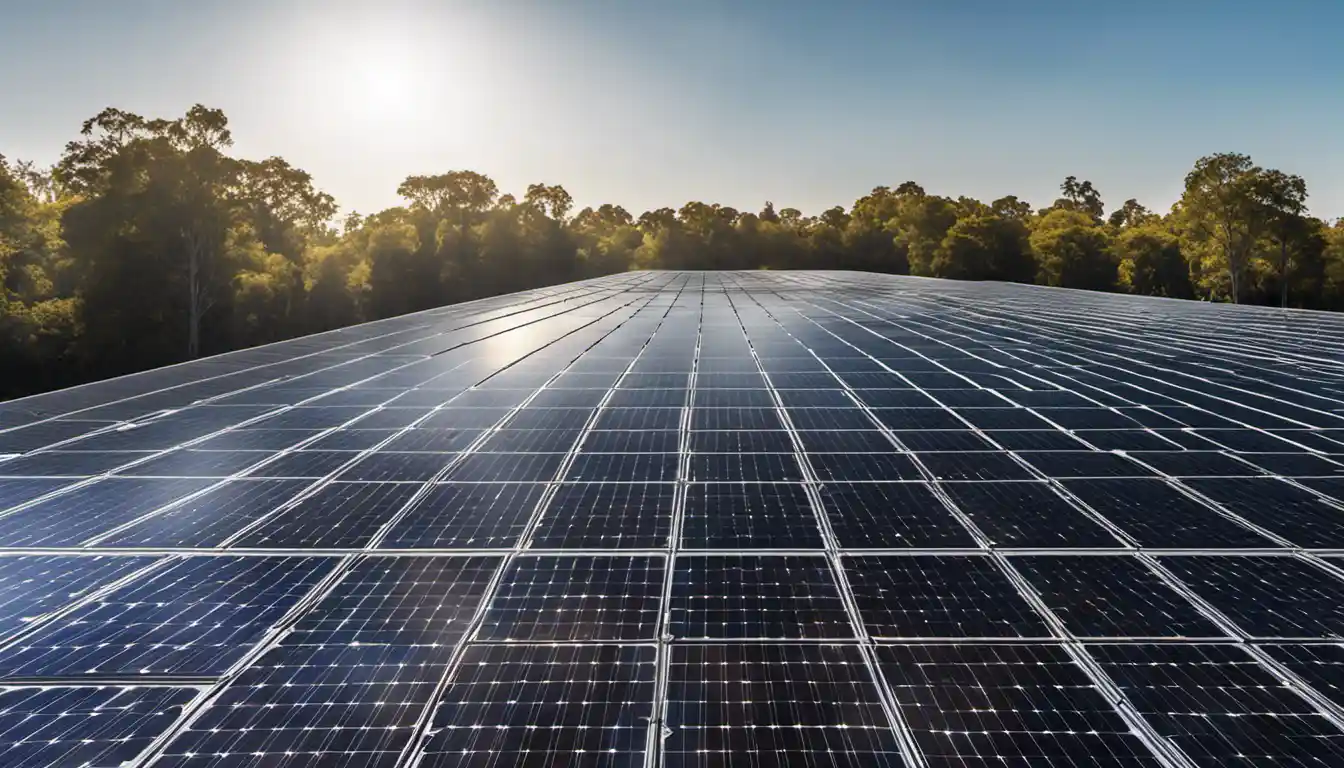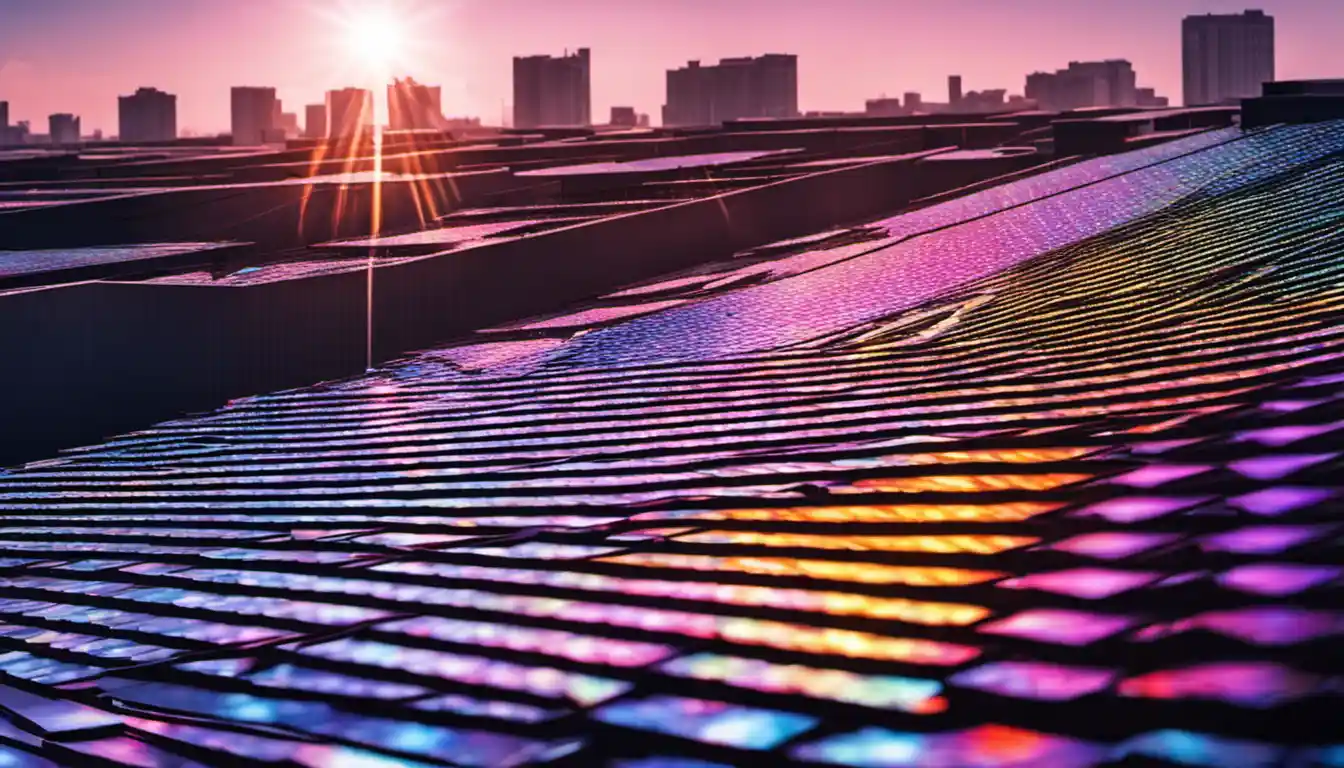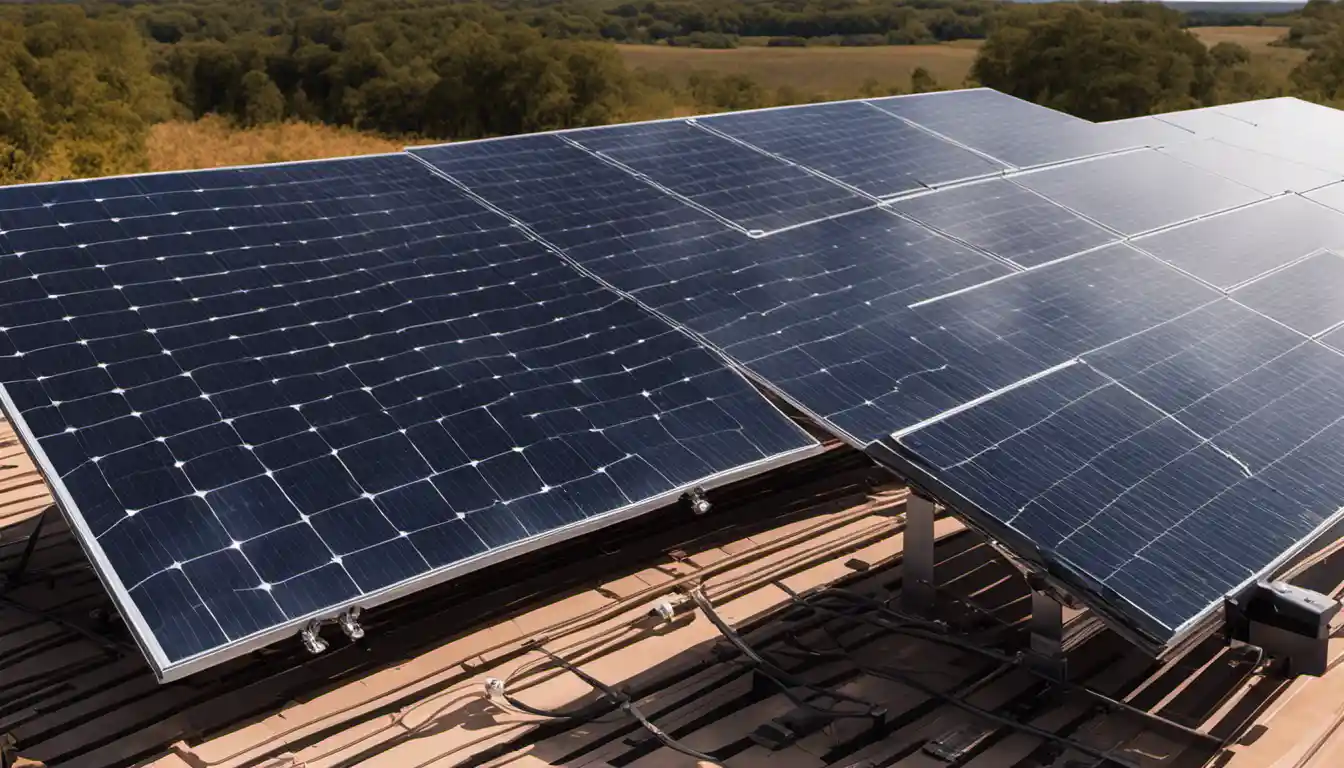Introduction to Mono Perc Solar Panels
Mono PERC solar panels have advantages such as high efficiency and power output, excellent performance under low-light conditions and they degrade slower than other types. However, they are relatively expensive and their production process involves a larger carbon footprint in comparison to other types of solar panels.
What is a Mono Perc Solar Panel and How Does it Work?
A Mono PERC Solar Panel, short for Monocrystalline Passivated Emitter and Rear Cell, integrates advanced solar energy technology to enhance cell performance. Imagine it like a hyperactive plant, catching every bit of sunlight and converting it more efficiently than your average solar panel.
When we break down the term, ‘Mono’ refers to the Monocrystalline silicon used, denoting a pure and highly efficient form of silicon. ‘PERC’ is a unique cell technology that increases the efficiency rate. It emphasizes the passivation of the rear side of solar cells, cutting down energy loss and improving energy collection, particularly in low-light conditions. If you’re interested in the nitty-gritty details of how this works, check out our more in-depth article: What Are PERC Solar Panels?
Detailed Analysis of Mono Perc Solar Panel Advantages
Cost-Effectiveness and Efficiency of Mono Perc Solar Panels
Despite a higher upfront cost, the stellar efficiency of Mono PERC panels tends to balance out the initial investment. These panels can convert more than 20% of sunlight into electricity, beating other contenders such as polycrystalline panels which hover at about 15-17%.
Enhanced Productivity and Slow Degradation Rate of Mono Perc Solar Panels

As with a classic car taken care of, the degradation rate of Mono PERC solar panels is slow. After the initial period of performance drop, these panels degrade by only around 0.2-0.4% per annum, ensuring that even after a couple of decades, your panels are still going strong.
Adaptable Installation: No Space Restrictions and Few Modifications Required
One of the more appealing mono PERC solar panel advantages is that the rooftop space required isn’t a concern. Their high efficiency allows users in urban environments or those with limited roof space to generate more power using fewer solar panels. Imagine being able to power your home efficiently regardless of how small your rooftop area is!
Detailed Analysis of Mono PERC Solar Panel Disadvantages
Fragility of Mono Perc Solar Panels
Bearing in mind that ‘mono PERC solar panel disadvantages’ won’t fit neatly into everyone’s scenario, one of the main gripes is their fragility. High-performing as they are, these panels still suffer from the delicate nature of solar cells. One major hailstorm or stray cricket ball can pose a significant threat.
High Purchasing Cost of Mono Perc Solar Panels

Monocrystalline technology does not come cheap, and things get even pricier when we add in PERC cell tech. For some, the high purchasing and initial installation costs of mono PERC solar panels can be a drawback, even when offset against future energy savings.
Potential Performance Concerns with Mono Perc Solar Panels
There’s always a trade-off with technology, and mono PERC solar panels are no exception. They perform brilliantly in cold, low-light conditions, but rising temperatures can begin to impact efficiency. For those in particularly hot climates, this might sketch some clouds on the horizon of their solar dreams.
Comparison: Mono vs Mono-Perc Solar Panels
Comparing the Efficiency of Mono and Mono-Perc Solar Panels
Solar efficiency has always been the ultimate competition. Going ultra-efficient, mono PERC solar panels, with their typical 21-22% efficiency, step up to the challenge, clearing the bar set by mono panels that boast around 15-20%.
Assessing the Difference in Cost between Mono and Mono-Perc Solar Panels

With the advanced technology added, mono PERC panels come at a higher price than mono panels. However, they offer a quicker return on investment because of their higher efficiency rates and extended lifespans.
The Price of Mono Perc Solar Panels
The specific costs depend on many factors but, generally, warranties and longer cell life periods combined with better efficiency may end up saving you money in the long run with mono PERC solar panels.
Maintaining a Mono Perc Solar Panel Over Time
The story doesn’t stop after the installation, a good maintenance plan with consistent checks can elongate the lifespan and efficiency of the solar panel, making the most of this innovative technology.
Conclusion: Weighing the Pros and Cons of Mono Perc Solar Panels
Like every good tale, there are ups and downs regarding mono perc solar panel advantages and disadvantages. Given the advancements in the technology, the tougher question is whether the high-efficiency rates, space-saving potential and extended lifespan outweigh the high initial cost and temperature-related performance concerns. The answer will be a unique reflection of an individual’s specific needs, resources and climate conditions.
Solar power is an evolving technology, and with my 20 years of experience, it’s always been a thrill ride. And mono PERC solar technology, despite its disadvantages, is another exciting leap forward.



